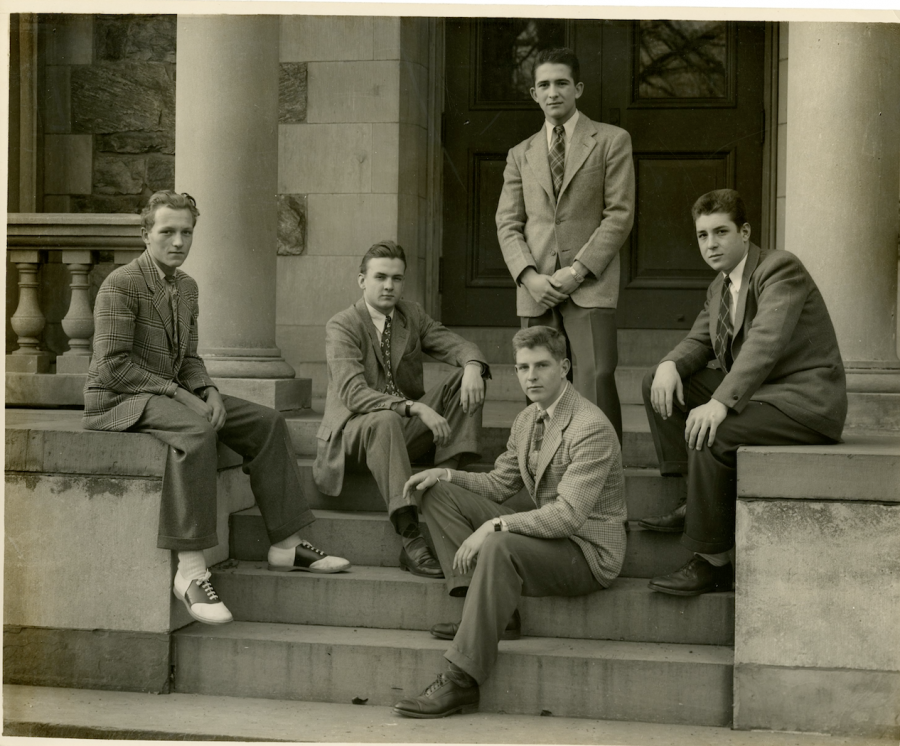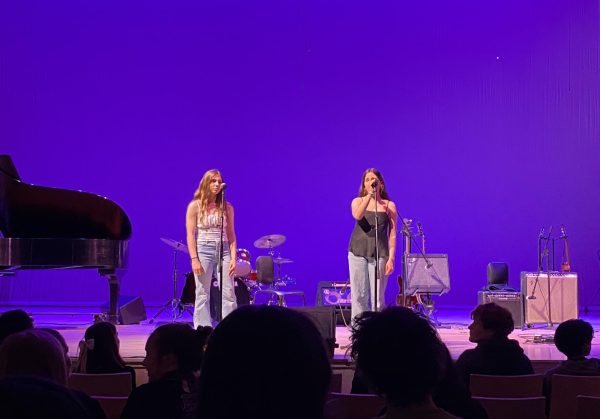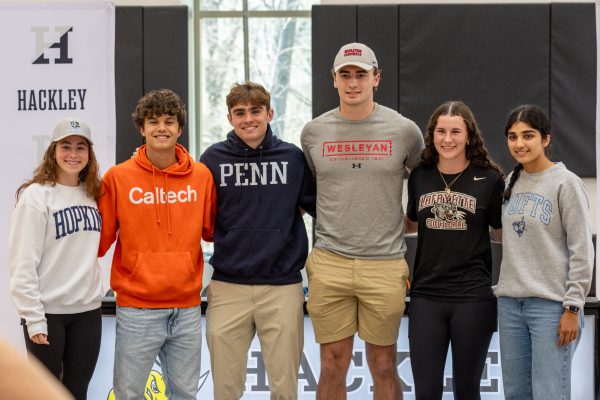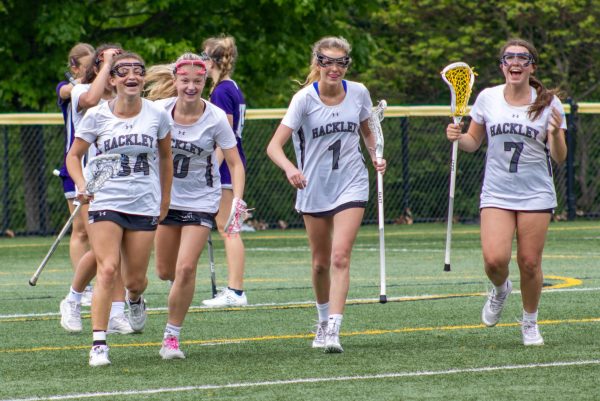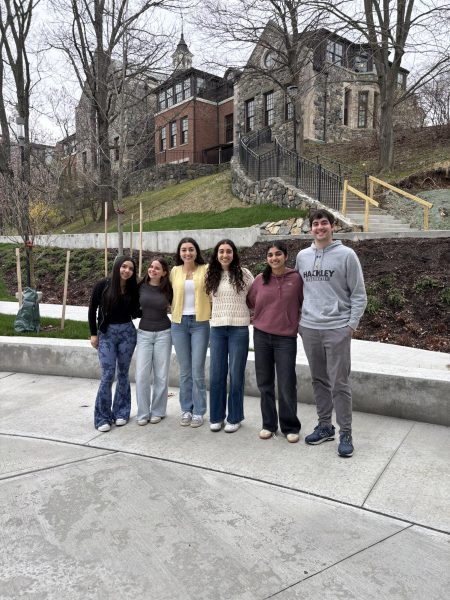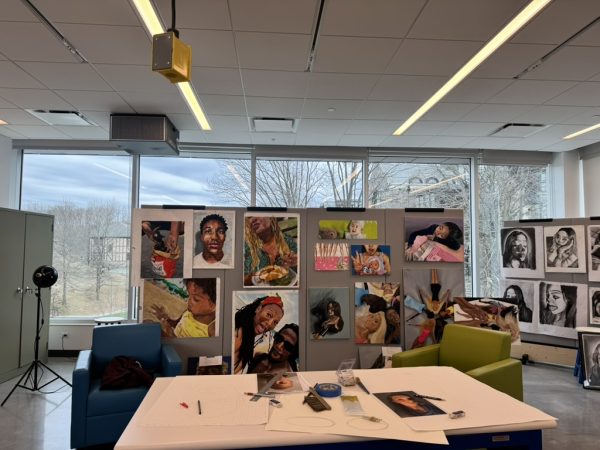The evolution of cool: portrait of the past
]The “American Cool” exhibit ran at the Smithsonian’s National Portrait Gallery from February 7 through September 7 of 2014. According to the exhibit “cool” is a surprisingly complex system of alternative success, an identity, a way of being, recognizant of those who leave a cultural legacy behind.
When people think of “cool” today, they often refer back to mainstream figures of modern pop culture, but Hackley alumni Lori Ordover (class of 1972), Louis Russ (class of 1953), and Malcolm Mooney (class of 1962), the first female and Black students at Hackley, might be more accurate examples of the original meaning of “cool.” They certainly provide powerful examples of how Hackley has evolved over the years and the struggle attached to that change. Education is a powerful rung on the American social ladder, and early in the 20th century, inclusion and integration only added to a growing social friction. So as one can imagine the first Black and female students at Hackley often faced obstacles that made a strategy like “cool” useful. One sees this in the way that even considering admission for Black students was considered controversial.
“The Negro problem is a difficult one,” wrote Hackley trustee Horton Batchleder in 1946, “I don’t think you can force liberalism down other people’s throats.” Many like Batchleder felt that Hackley could not afford to take on Black students because doing so would risk the loss of tuition from any white students who would reject integration. “The introduction of one negro into your community might easily lead to the withdrawal of five or six, maybe ten or a dozen white boys,” wrote Batchleder to a fellow trustee.
Hackley casually considered enrollment for Black students for a while, but no actions were taken until thirteen students wrote and signed a letter asking for the integration: “We want to have them,” they wrote.
With so many moving up the social stratum and using education as a ladder, cultural and economic frames of identity changed what it meant to be “cool,” giving it personal subtleties of independence and endurance.
When Louis Russ, son of a Liberian diplomat, enrolled in 1950, making history as the first African student at Hackley, he suffered ignorance and racism despite the students who welcomed him.
There is a sort of cultural synergy that has gotten lost in the term. Often at the root of it, cool had been a shield, a tool Black people used in adversity. Ms. Akin, Director of Communications, recalls being told by alumni from the period that Russ was treated poorly by his peers.
Fortunately, with more time, Black students became popular and well-respected members of the Hackley community, and a big part of this was due to sports. Hackley historian, Walter Schneller, writes that “at a time when many white people were struggling to accept an integrated society, athletics were a forum in which Black students could gain access and recognition.” For example, Malcolm Mooney, class of 1962, was recruited from the Yonkers school system by Graeme Dalzell, the founder of the Colts Boys Club of Yonkers. Malcolm Mooney was one of Hackley’s star athletes, and playing three varsity sports, he was also a leader and captain to many Hackley students. “They called me ‘Missile’ because I was the fastest one up there,” said Mooney.
Mooney represents the alternative success system of cool, using sports and academics as a bridge between him and his classmates, as another shield against ignorance and social friction.
The first girl to be registered in the Upper School was Lori Ordover (née Levine), arriving fall of 1970 as a tenth grader. In November of 1969, the Dial article, “Girls to be Admitted,” discussed impending coeducation and captioned a picture of a future female student with “What’s She Doing Here?”
Lori Ordover is a powerful example of cool, she was a pioneer of coeducation at Hackley, leaving a great cultural legacy behind, and setting the standards for many Hackley students today.
When Lori attended Hackley, She was a self-proclaimed “radical.” She credits this to the fact that her family was coping with the possibility of her brother getting drafted to fight in Vietnam and her troubles at her old junior high school. “You never knew when you were gonna get picked on,” said Lori.
Lori made the move to Hackley from the more “rough” Albert Junior High School because she wanted a more academically rigorous program. She was the first recipient of the Hackley Bowl, and was amazingly dedicated to Hackley. “All I know is that I cared about my education.”
When Lori attended Hackley, there were few women in her class, there weren’t enough female students to warrant having a sports team of their own, and the dress code was unreasonably restrictive, limiting the girls to dresses and full shirts.“I couldn’t wear my fringe, my suede, my beads, my Doc Martens, or my bell-bottoms,” said Lori. “But then the weather started getting cold. And we wanted to wear pants,” said Ordover. At a time when “The boys were pretty conservative” and “the school was pretty conservative,” Lori challenged the institution, setting standards that many Hackley students still enjoy today.
Thanks to Ordover, current female students at Hackley can enjoy a rigorous education, a rewarding athletic career, and a dress code that does not confine to gender-specific femininity. Louis Russ, Lori Ordover, and Malcolm Mooney represent the agency of many courageous Hackley students who were beyond their time, individual, and thus extremely cool. Maybe they were not explicitly called so in their day, but the recognition comes today, along with gratitude to those who have contributed so significantly to the social standards at Hackley today.
[related title=”Related Stories” stories=”11350″ align=”left” background=”on” border=”all” shadow=”on”

